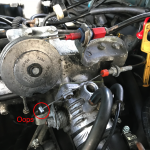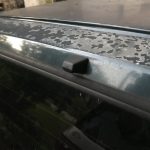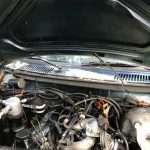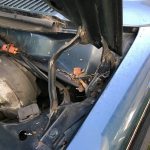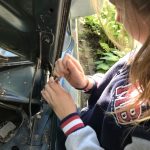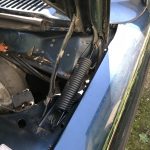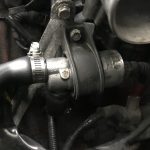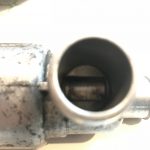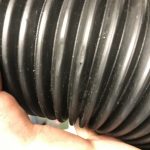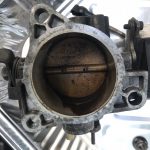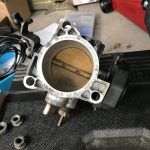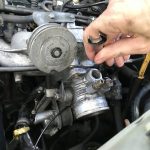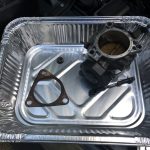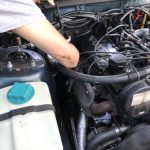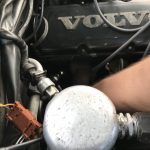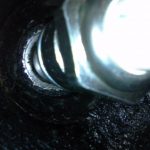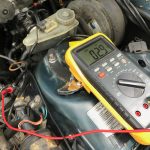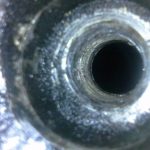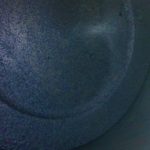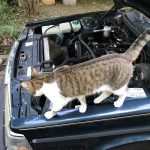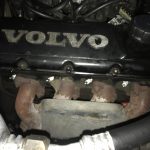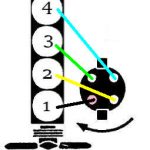I need a plan.
As an amateur I’m mostly winging it here. I’ve taken a dirty, busted looking car that sort of ran and turned it into a cleaner, less busted looking car that doesn’t really run. Not impressive. I’m starting to think that this hasn’t been working as well as I hoped. Therefore I think I need a plan of action to get my motor running again.
Every engine needs three things in order to start and run:
- Spark – Are the spark plugs sparking correctly to provide ignition for the fuel/air mixture?
- Air – Is the engine getting enough air to enable combustion?
- Fuel – Is gasoline getting to the engine in sufficient quantities to mix with the air to enable combustion?
Spark
The most basic way to test for spark is to simply remove the plug to be tested, reattach it to its boot, and hold the shell or threaded part against a grounded part of the engine. Crank the engine, and if a spark jumps the gap then all is well. If you don’t get spark it could mean one of several things.
- The plug is bad and should be replaced.
- The plug is badly gapped. Either the ground electrode is too far away and no arc can form or it’s too close and the arc is not occurring at the correct point.
- The wire from the distributor is broken somewhere and should be replaced.
- The distributor cap’s contact points are worn out or corroded.
- The distributor’s rotor is worn out.
- The ignition coil is bad.
- The timing is off. There is a specific method to setting the timing on a 240. It might be a good idea to reset the timing if only to get experience with this process.
There are other possible causes of bad spark but those are a bit beyond the scope of what I’m working on.
Air
Air is fed into the engine through the large air intake hose that starts at the front of the car near the grille and passes through a filter, the Mass AirFlow (MAF) sensor, the throttle body, and into the intake manifold. Balancing the air and fuel mixture can be a pretty delicate thing. A leak or other unexpected mechanical failure along this path can result in too much air coming into the engine. A dirty filter might bring in too little. Some typical points of potential failure in the air intake system are:
- A malfunctioning or obstructed air box. Volvo 240 air boxes have a thermostat that allows air warmed from the exhaust manifold into the system on cold mornings and that has a tendency to seize up over time. I’ve already fixed mine (see here) so this isn’t my issue.
- A dirty and overly clogged air filter will decrease airflow. I changed the filter recently, so cross that off my list.
- A malfunctioning MAF sensor can’t accurately gauge the amount of air flowing into the engine at any given time. This prevents the ECU from properly calculating the fuel mixture and will cause the engine to run poorly or not at all. I cleaned mine recently and tested it, so, again, that’s not my own issue.
- Leaks in ducts and hoses, especially downstream from the MAF, will throw off mixture calculations. The bellow-like section after the MAF becomes brittle over the years. When I took it out originally it may have cracked, so I’ll have to inspect it carefully.
- A bad Idle Air Control valve will keep the engine from idling properly. Since my stalls are happening at idle this could very well be a problem in my car.
- A dirty throttle body will stick or otherwise not properly open and close and not supply the desired amount of air to the engine. I plan on taking mine off and cleaning it with carb cleaner.
- A malfunctioning Fuel Pressure regulator, although more directly concerning fuel rather than air, runs on vacuum and therefore needs to be inspected for air leaks and such. Its function is to maintain adequate pressure in the fuel rail. A cursory check of mine found no gas on the “dry” side so this is probably not a problem.
Some cleaning and testing are definitely in order. I’ve heard that spraying the air intakes with starter fluid and listening to see if the RPMs jump up for a moment, the idea that this fluid is being sucked into the airway and providing a brief boost to the engine, is one way to see if there are leaks. Another is to use a smoke source or fogger to attempt to spot unexpected air currents around the air hoses.
Fuel
On my car, fuel is delivered from the tank to the engine via a pump, sent at pressure through a hose, and into the fuel rail where it is injected into the cylinder for combustion. The amount of fuel sprayed and its timing is controlled by the Engine Control Unit, a computer that takes in all the data from various sensors and figures out the correct fuel/air mixture. My particular ECU is a Jetronic LH 2.4 made by Bosch (part # 0 280 000-561) in Spain. Thankfully mine is a “white label” version. Some -561 ECUs came with a pink colored label and are said to be “problematic”, so it’s nice to not have to deal with that at least.
- A faulty Fuel Pump will obviously not be able to send gasoline to the engine. The pump is inside the gas tank and requires a special tool to remove (or at least make it easier), so I don’t think I’ll be taking mine out right now. However it is possible to test if the pump is actually capable of running by jumping the 4th fuse from the top of the fuse panel to the 6th. This will bypass the fuel relay and turn the pump on.
- The Fuel Pump relay is the switch that normally controls the operation of the fuel pump. If the pump works when jumpered as described above but not when the relay is plugged in the relay is bad and needs replacement.
- There are actually two Fuel filters in a 240: one (on my car, at least) is located underneath and near the driver side wheel and the other attached to the fuel pump itself. Since I don’t know when the last time either had been changed I should do both.
- In order for fuel to make it to the engine in the correct amounts required, Fuel pressure must be maintained at the rate. For my LH 2.4 this is 43.5 psi (3.0 bar). I’ll have to test this to make sure that even if the pump is working it is working hard enough.
- Dirty injectors will mess up the fuel air mixture and either degrade or prevent proper combustion. The primitive, pre-OBD diagnostic computer on my car has already said the injectors are not malfunctioning, but I’m told that if I remove them and take them to a shop I can get them flushed properly which will help in engine performance. Food for future thought.
- If the Engine Control Unit is broken then every other part of the system becomes irrelevant. As far as I can tell my ECU seems to be working fine, and I really don’t know how to test it. As mentioned, the -561 ECUs, especially the “pink label” models were touchy, so eventually I might want to look into changing mine out for a compatible and supposedly more reliable -951 model.
It’s a pretty long list, but I’ve already ticked a couple of boxes so far, and crossing them all off the list will put me in a decent place to truly understand how all this stuff works together.
